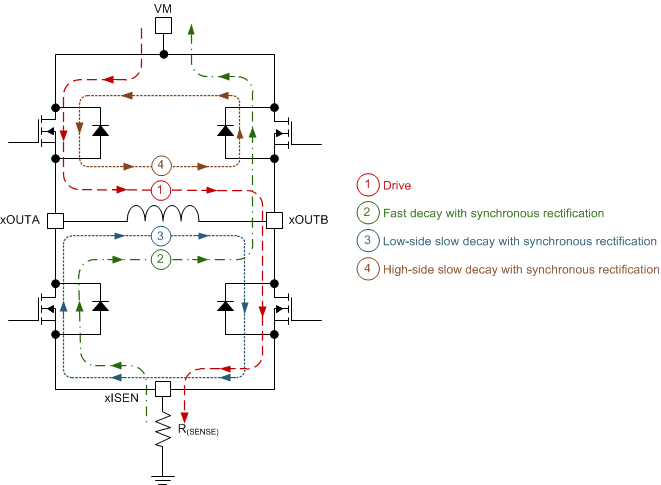SLVSC79D June 2014 – November 2020 DRV8801A-Q1
PRODUCTION DATA
- 1 Features
- 2 Applications
- 3 Description
- 4 Revision History
- 5 Pin Configuration and Functions
- 6 Specifications
-
7 Detailed Description
- 7.1 Overview
- 7.2 Functional Block Diagram
- 7.3 Feature Description
- 7.4 Device Functional Modes
- 8 Application and Implementation
- 9 Power Supply Recommendations
- 10Layout
- 11Device and Documentation Support
- 12Mechanical, Packaging, And Orderable Information
Package Options
Mechanical Data (Package|Pins)
- RMJ|16
Thermal pad, mechanical data (Package|Pins)
- RMJ|16
Orderable Information
7.3.4 Slow Decay with Synchronous Rectification (Brake Mode)
In slow-decay mode, both low-side and high-side drivers turn on, allowing the current to circulate through the low-side and high-side body diodes of the H-bridge and the load (3 and 4 in Figure 7-1). See the Section 10.3 section for equations to calculate power for both high-side and low-side slow decay.
 Figure 7-1 H-Bridge Operation Modes
Figure 7-1 H-Bridge Operation Modes